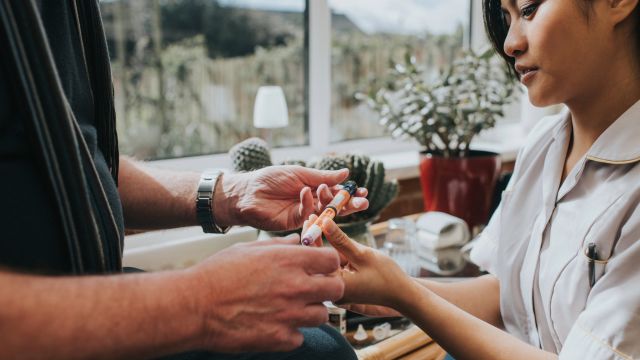Type 1 diabetes is an autoimmune disease where the body’s immune system destroys cells that produce insulin. Insulin is a hormone that the body requires in order to move a type of blood sugar called glucose from the bloodstream into cells. Cells throughout the body depend on glucose for energy.
Without insulin, glucose builds up in the blood. This can lead to many different symptoms and complications, as the body is unable to use glucose for energy and high levels of blood glucose cause damage to different parts of the body.
People who have type 1 diabetes will require insulin therapy—doses of synthetic insulin that replace the insulin the body does not make. Some people receive insulin with wearable devices called insulin pumps. But syringes and insulin injection pens remain popular methods of administering insulin. Any of these methods of delivery can cause bruising. While the focus of this article is insulin injections, bruising can also occur when using a needle or lancing device to take blood for a glucose reading.
If you are living with type 1 diabetes and are seeing bruises after giving yourself injections of insulin, below are some tips that may help you address this problem.
Why does bruising occur?
Bruising occurs when pressure on an area of the skin causes small blood vessels to rupture and bleed, and blood becomes trapped under the skin. The trapped blood is what causes the tender purple or black spot to appear.
Bruising caused by injections is usually the result of improper technique, like applying too much pressure. If you are experiencing bruising, see a healthcare provider. A healthcare provider can watch you administer a shot, help you adjust technique if necessary, and determine the cause of bruising.
It’s also worth mentioning that people with diabetes can experience scarring in the areas of the body where insulin is injected. This appears to be more common among people with type 1 diabetes, and it may be caused by the immune system responding to repeated trauma to the area. It’s unknown if this is in any way associated with bruising, but any skin changes or bumps under the skin should be discussed with a healthcare provider.
Tips to reduce bruising
While a healthcare provider will be your best source of information about bruising and injection technique, here are some factors that you may look at:
- Rotating injection sites. Ask your healthcare provider for a chart showing the areas of the body where to inject insulin. Ask how often to rotate injection sites, and how far apart to space one shot from the last. Keep a record of where previous shots have been given.
- Avoid scars, lumps, bruises, and tender spots. The injection site should be free of any scars or lesions, and you will want to avoid injecting into a spot that is injured.
- Check the angle. A needle should enter the skin at a 45-degree angle or a 90-degree angle depending on skin thickness. This is something your healthcare provider can elaborate on.
- Check the needle size. Insulin needs to be injected into the layer of fat under the skin. Having an appropriately sized needle will make this easier. You want to avoid injecting insulin too deep (into the muscle) and you also want to avoid insulin leaking from the skin, which can happen if an injection is too shallow.
- Check how much pressure you are applying. Bruises are often the result of applying too much pressure to the skin when inserting a needle.
Remember, be honest with your healthcare provider if any aspect of your treatment plan isn’t working for you. This includes bruising after injections, knowing how much insulin to take and when, or knowing how to respond to episodes of high or low blood sugar. Your healthcare provider is there to help you come up with solutions.






